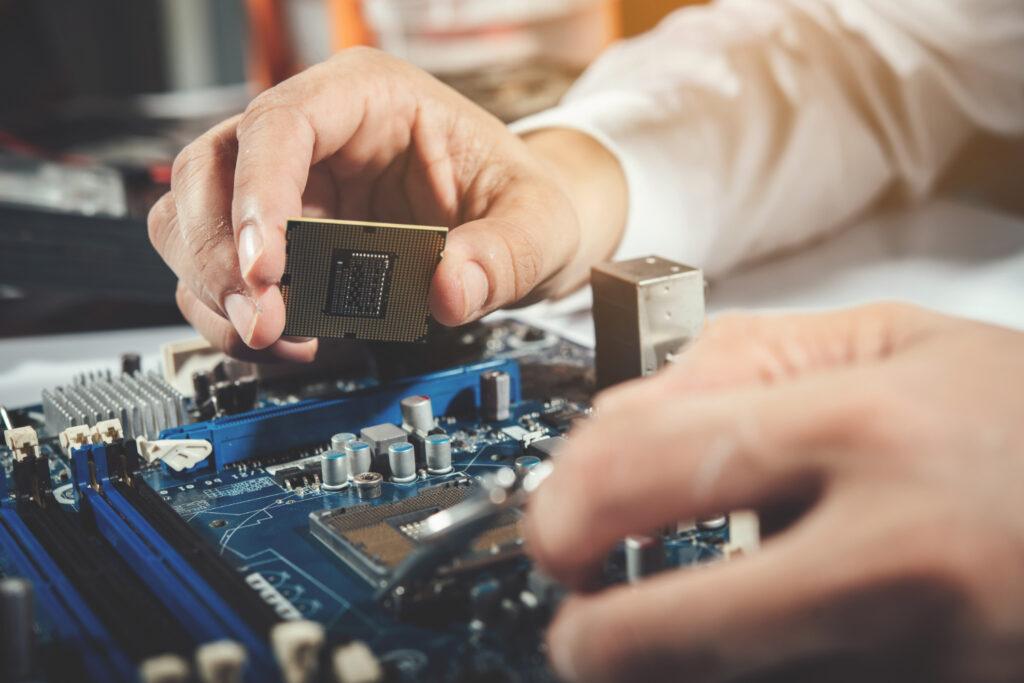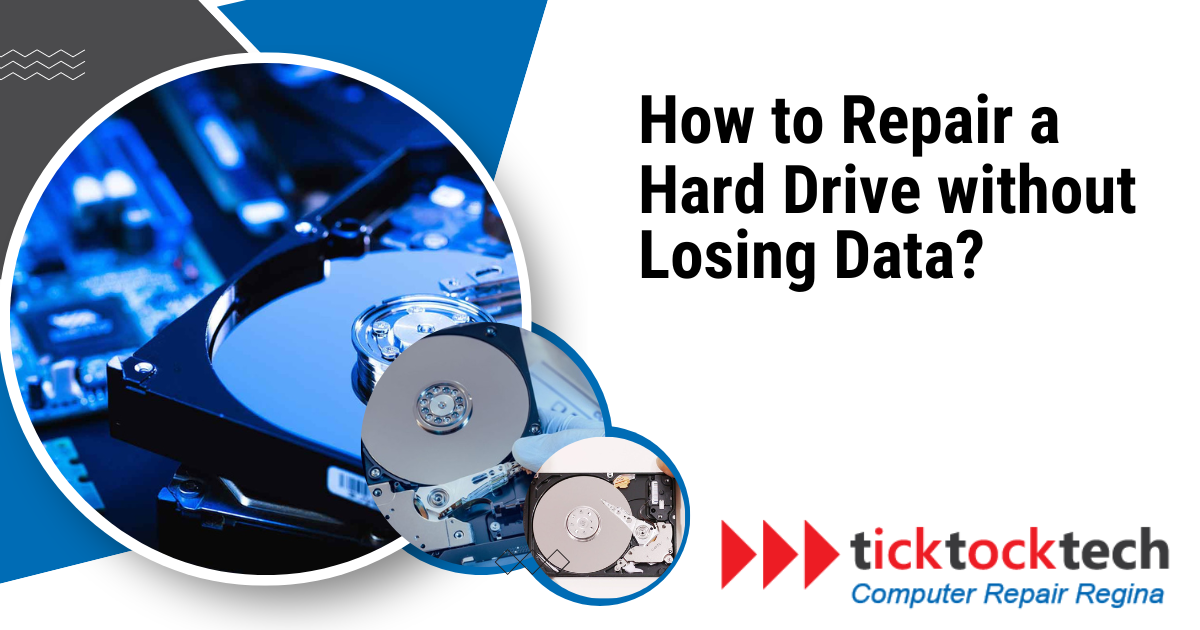Encountering data corruption in your hard drive can be an unpleasant and messy experience. Hard drive issues could leave your valuable data inaccessible or even lead to significant data loss. Surprisingly, data corruption is a more common issue than we might imagine, often forcing people to consider the drastic step of formatting their entire drive. However, there are ways to face this problem and safeguard your valuable data from being lost. In this article, we will look at how to repair a hard drive effectively without losing data.
Common Causes of Hard Drive Corruption
Before delving into the methods of repairing a hard drive, it’s essential to understand the common reasons behind hard drive corruption. Identifying these causes will help us better grasp the nature of the problem. Here are some frequent reasons why a hard drive may become corrupt:
- Physical Damage: Hard drives are delicate mechanical devices with sensitive components. Physical shocks, drops, or exposure to extreme temperatures can lead to damage, rendering the drive inaccessible.
- File System Errors: The file system acts as the roadmap that helps the computer navigate and locate data on the hard drive. If it becomes corrupted due to unexpected system shutdowns or software issues, accessing data becomes problematic.
- Bad Sectors: Hard drives consist of sectors to store data, and if some sectors become damaged or unreadable, data stored in those areas can be lost or corrupted.
- Virus and Malware Attacks: Viruses and malware can wreak havoc on a hard drive, causing data corruption and making files inaccessible.
- Overheating: Excessive heat can harm the internal components of a hard drive, leading to data loss and drive malfunction.
- Outdated Firmware or Drivers: Using outdated firmware or drivers can cause compatibility issues and result in hard drive corruption.
- Power Surges and Electrical Issues: Sudden power surges or electrical problems can disrupt data transfers and damage the hard drive.
Knowing the common causes of hard drive corruption allows us to approach the repair process with a better understanding of the potential underlying issues. In the following sections, we’ll explore effective methods to repair your hard drive and retrieve data.
How to Retrieve Your Data from the Hard Drive Without Formatting
Before attempting any repair on your hard drive, it’s always a good idea to confirm if there is a connection problem. Ensure the USB cable is free from wear and tear. You should also try connecting the hard drive to another PC.
The process of recovering your files from a corrupted/faulty hard drive may seem complicated initially, but it is fairly straightforward. It is important to note, if you find yourself facing the possibility of data loss due to a corrupted hard drive, stop using the drive right away. Continuing to use the hard drive could lead to new data overwriting your lost files, reducing the possibility of recovery. To maximize your chances of retrieval, refrain from using the drive any further.

Ultimately, there are three ways you can do this:
- Using CHKDSK
- Changing the hard drive letter
- Using an external data recovery software
Using CHKDSK
One powerful tool at your disposal for fixing logical file system errors on your hard drive is CHKDSK (check disk). This command-line tool is designed to identify and correct disk errors, making it a great utility for data recovery. Utilizing CHKDSK with the appropriate parameters helps you check the disk surface for bad sectors and resolve them, all without the need for formatting.
Here’s a step-by-step guide on how to fix logical file system errors with CHKDSK:
- Open Command Prompt as Administrator: Begin by typing “cmd” in the search box on your taskbar, then right-click on “Command Prompt” and select “Run as administrator.” This will grant the necessary permissions for CHKDSK to perform its tasks effectively.
- Enter the CHKDSK Command: Once the Command Prompt is open as an administrator, type the following command and hit ENTER: CHKDSK C:/f/r/x
(replace ‘C’ with the letter assigned to your external hard drive)
The “/r” parameter instructs CHKDSK to thoroughly scan the entire disk surface, identifying and repairing any bad sectors it encounters.
- Wait for the Process to Complete: Depending on the size of your external hard drive, the CHKDSK process may take several hours to finish. Be patient and allow the tool to complete its task effectively.
CHKDSK’s powerful functionalities include ” /F” to fix errors on the disk, ” /R” to locate and recover readable information from bad sectors, and ” /X” to force the volume to dismount if necessary.
Changing the Hard Drive Letter
If your external hard drive fails to receive an assigned drive letter when connected to your computer, no need to worry. This can sometimes be due to file system corruption or random glitches in the operating system. You can resolve this issue by manually changing the drive letter. Here’s how to go about it:
- Access Disk Management Tool: Press the Windows logo button + X to bring up the Quick Access Menu. Then select the Disk Management tool from the options.
- Locate Your External Hard Drive: In the Disk Management window, locate your external hard drive from the list of available drives.
- Right-Click and Select Change Drive Letter and Paths: Right-click on your external hard drive and choose the “Change Drive Letter and Paths” option from the context menu that appears.
- Add a New Drive Letter: In the following window, click the “Add” button to assign a new drive letter to your external hard drive.
- Choose a Drive Letter: From the drop-down menu, select a new drive letter for your external hard drive. Ensure that the letter you choose is not already in use by other drives.
- Confirm and Apply: Once you’ve selected the new drive letter, click “OK” to confirm your choice. Then, click “OK” again to close the window.
Using an External Data Recovery Software
If you’ve attempted the methods above without success in recovering your external hard disk without formatting, it’s time to consider using data recovery software. This kind of software scans the external drive and logically repairs the essential links required for the operating system to access the data on the disk. A reliable data recovery application can effectively retrieve your files when other methods have failed. Some of them include EaseUS, Stellar Data Recovery, Disk Drill, etc. Again, it’s crucial to exercise caution and refrain from using the drive until after utilizing the recovery tool to avoid accidentally overwriting data before it can be restored.
You should also consider seeking professional assistance by looking at a professional data recovery service center for assistance.
FAQs
Yes, a damaged hard drive can sometimes be repaired, depending on the extent and nature of the damage.
You can try data recovery software to retrieve your files and apply disk repair tools for logical errors. It’s essential to back up your data first and exercise caution throughout the process to prevent potential data loss.
To fix a corrupted hard drive that is unreadable, you can try using data recovery software to retrieve your files. If that doesn’t work, seek professional assistance for more advanced recovery options.
Conclusion
Hard drives can be prone to unexpected failure and data loss. By following the steps outlined in this article, you can repair a corrupted external hard drive without losing your valuable data. Remember to back up your files regularly, utilize data recovery software when needed, and take preventative measures to safeguard your drive.

